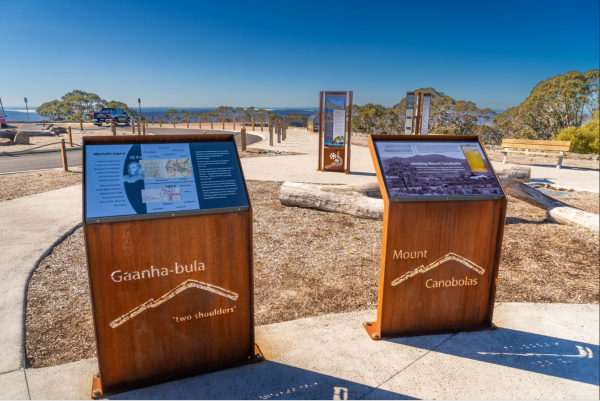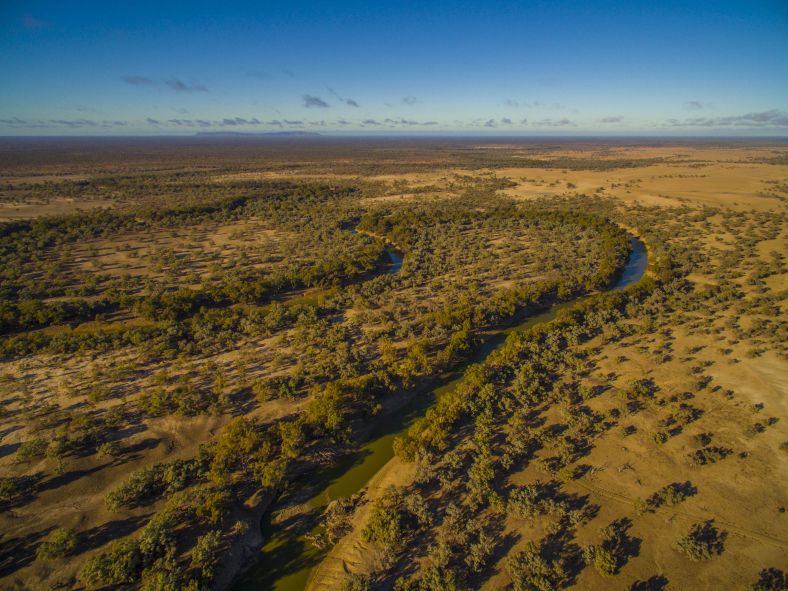Acknowledgement
The Geographical Names Board acknowledges the Traditional Custodians of the lands where we work and the places in which we live. We pay respect to Ancestors and Elders past and present. We recognise the unique cultural and spiritual relationship and celebrate the contributions of First Nations peoples to Australia.
Image: ‘Connecting Communities’ original artwork by Alison Williams.

Recognising traditional Aboriginal names
Many geographical features already have traditional names that were long used by the local Aboriginal community before European settlement.
Traditional names can be officially recognised and recorded, which enables the story and culture of the local Aboriginal community to be shared.
For example, Didthul / Pigeon House Mountain, near Ulladulla on the South Coast, has profound spiritual significance to the local Aboriginal communities of the South Coast and Southern Highlands.
The mountain features in Dreamtime stories passed down in oral traditions. One story relates to the hunting and capture of an eel, which the people roast on the beach while they're sleeping. A pheasant (probably meaning a lyrebird) takes the eel from the fire and carries it to Didthul.
Through the GNB's dual naming policy, we restore traditional Aboriginal names alongside introduced names. See Dual naming.

Gaanha bula Mountain, Mount Canobolas State Conservation Area
Simone Cottrell/DCCEEW

Reawakening Aboriginal Place Names
Proposing an Aboriginal name
To name a feature or place using Aboriginal language or a traditional Aboriginal name, you'll need to first engage with the local Aboriginal community.
This may be the Local Aboriginal Land Council (LALC), relevant Elders, or Aboriginal community groups within the local area.
Consultation with the local Aboriginal community is important to ensure:
- a culturally appropriate name is chosen
- the word comes from the local language group
- the story and meaning behind the word is captured and
- the community supports the name for the feature or place.
The name needs to comply with the GNB's Place Naming Policy and have the endorsement of the local council or government department that administers the area.
To propose a name and see our process for approvals, visit How places are named.
Find resources to help your proposal at First Nations Community Access to Archives at the Museums of History NSW, and Aboriginal Australians at the State Library of NSW.
Image

Dual naming
The GNB is committed to restoring the traditional Aboriginal names for places in NSW. Where a feature has an official name, the Aboriginal name can be assigned as a dual name. Learn more about dual naming here.

